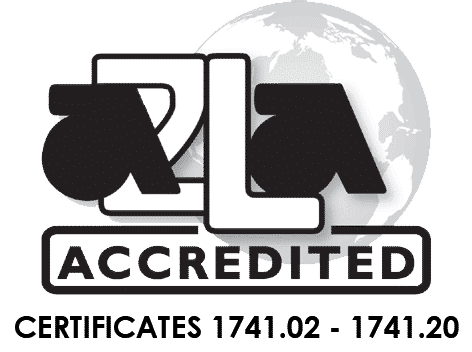Ensuring Your Calibration Program Is Audit Ready
Audits are a necessary and often nerve-wracking aspect of doing business for manufacturers. Whether you’re undergoing ISO, FDA, or customer audits, calibration is a critical component of maintaining compliance and ensuring quality. So how can you feel confident in your calibration program heading into an audit?
We have tremendous experience working with customers before, during, and after audits. We compiled the following checklist to help you identify potential issues before they arise in front of an auditor:
1. Review your vendor’s certificates of calibration. Check for errors and omissions. Ensure the ID number on the certificate matches the tool, and the next calibration due date corresponds with your gage management system. Calibration certificates should also provide the results of the calibration and the standard used.
2. Define “appropriate” calibration intervals for your test and measurement equipment. Some key factors to consider when determining intervals are manufacturers’ recommendations, instrument past behavior, frequency of use, and criticality to final product quality.
3. Develop calibration interval extension authority for tools kept in storage and activated on initial use.
4. Ensure your measurement tools exceed your required process tolerances and that there are documented Gage R&R studies supporting the tools selection for use. Tool tolerances should be, at a minimum, ¼ the tolerance assigned to the process control.
5. If you perform in-house calibrations you should ensure the instruments you use as calibration standards are calibrated using a standard traceable to NIST. In-House calibration results must be documented in the form of a calibration report. The standard used should also be, at minimum, four times more accurate than the item being calibrated.
6. Calibrated items should be properly identified. Calibrated items should have labels or stickers affixed to them which contain the tool’s unique ID and calibration due date. Labels must also be legible since they are the primary means of communicating calibration status to users.
7. Indicate if you have tools that are “For Reference Only”. Are unlabeled tools assumed to be uncalibrated?
8. Make sure you can quickly and easily locate calibration certificates. Auditors possess a limited amount of time to complete the audit. You don’t want to waste their time fumbling through a file cabinet attempting to locate a certificate. Electronic access to calibration certificates is a good way to ensure you can quickly retrieve them during an audit.
9. Make sure you have an up-to-date copy of the Scope of Accreditation for the calibration vendors you use. Having copies on hand makes you look prepared and organized in front of an auditor, and helps the audit proceed smoothly and quickly.
10. Gages that control processes should also be considered for calibration. Any tool used to make qualitative or quantitative measurement should be calibrated.
For more information about how Cross can help you prepare for an upcoming audit, take a look at our calibration audit preparation section or click below to get a service quote!

